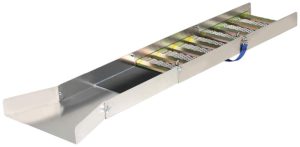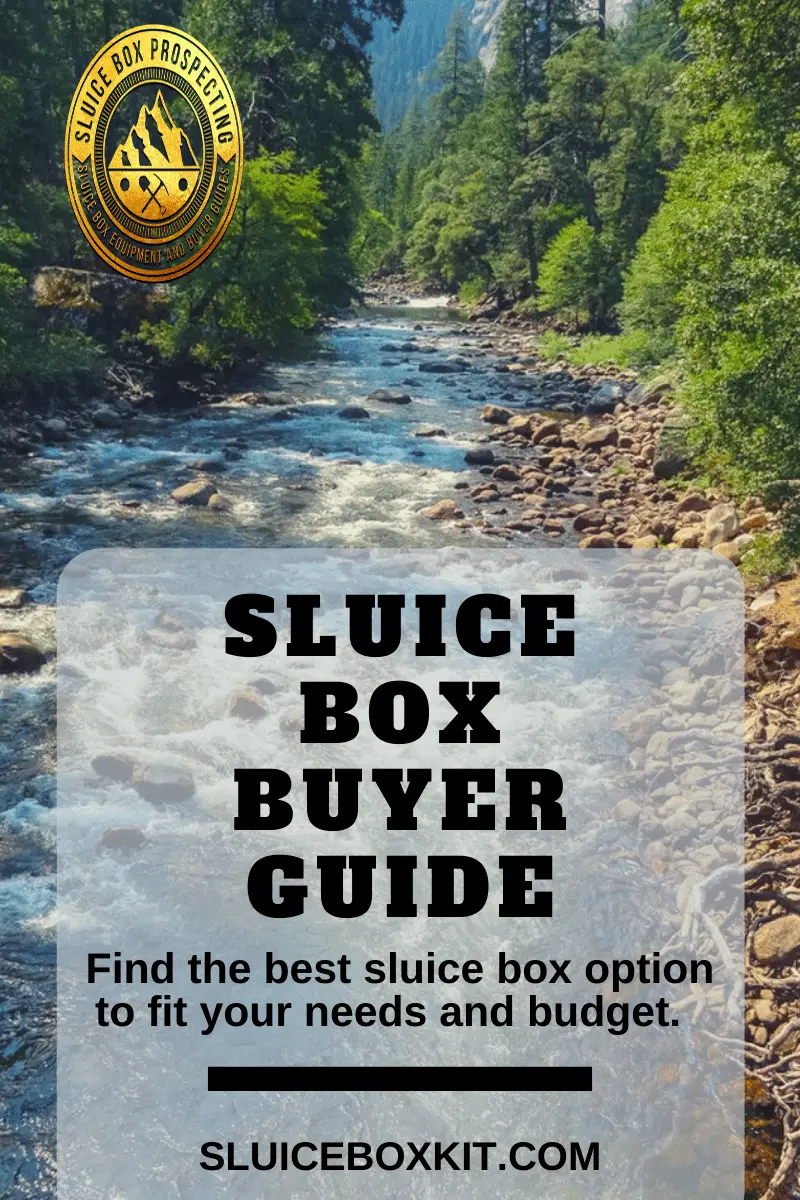Are you searching for the right sluice box to purchase? Whether you are a novice or a long-time prospector below, you’ll find information to help you make the right decision about which sluice box to buy.
Sluice boxes come in a variety of sizes, with different features and options. Depending on whether you are looking for light-weight and portable or more heavy-duty will determine the information you need. Be sure to use the table of contents below to easily navigate to the sections of this post that are most beneficial to you.
As an Amazon Associate, I earn from qualifying purchases.*Disclosure: Remember that we may receive commissions when you click our links and make purchases. However, this does not impact our reviews and comparisons. We try our best to keep things fair and balanced, to help you make the best choice for you.
What Is A Sluice Box
Table of Contents
In short, a sluice box is a long, narrow piece of equipment that channels running water primarily used for recovering gold and other valuable minerals.

A sluice box apparatus for recovering heavy materials, such as gold, comprises a fine recovery channel and a coarse recovery channel. The recovery channels have a receiving end, riffles, and matting for collecting fines of the material. A hopper at the receiving ends of the channels has a receiving end for aggregate, a discharge end adjacent to the receiving ends of the channels, a bottom, an open-top, and water distributing means near the top and the discharge end for washing fines from the aggregate. – Google Patents
How A Sluice Box Works
1. Water enters the box through the flared opening at the head of the box.
2. As the water flows through the channel, it passes over riffles, creating barriers for heavier material to be stopped.
3. When heavy materials become trapped in the miniature eddies created by the riffles, they settle onto a carpet, rubber mat, or “miners moss” located on the bottom of the box.
4. Because gold is heavy, it will settle to the bottom and remain trapped in carpet or m0ss. The result is a concentrate of materials to evaluate, pan, and recover.
How To Use A Sluice Box
Once you identify an area with potential for finding gold, which will require research and investigation, you’ll want to follow the basics of using a sluice box outlined below:
1. Place the sluice parallel in a shallow area that has a good flow of water. You do not want whitewater flowing through the sluice, as you will more than likely lose material due to the fast flow of water.
2. Ensure that the bottom of the sluice is angled slightly lower than the gate of the box. Adjust the angle as needed to ensure that the water is not flowing too quickly over it. Set the slope at one inch of drop for every foot of the box’s length as a general rule.
3. Most prospectors recommend classifying the materials before running them through the sluice. To do this, accumulate material from the area you want to search in buckets or troughs. Next, run it through a coarse screen to remove larger rocks and unnecessary materials.
4. After classifying, begin to add the material to the front of the box slowly. Eventually, you will need to check what has accumulated on the bottom of the carpet. Carefully lift the box, keeping it horizontally level as you remove it from the water.
5. Identify any larger pieces of gold and remove them using tweezers. Next, remove the carpet and thoroughly wash and clean the accumulated materials into a bucket. If using carpet, allow it to dry first. This will make it easier for gold to fall from the fibers loosely. Also, be sure to carefully wash down all parts of the riffles and box into the bucket too.
6. Finally, process the material using a pan to recover valuable gold and minerals.
What Makes For A Good Sluice Box
The best modern sluice boxes are durable, crafted from aluminum and zinc-plated components. They are portable, light-weight, and easy to set up. A good sluice box should also be easy to disassemble so that prospectors can quickly clean and process materials.
Because the riffles create barriers for the gold to become trapped, it is one of the most important features of a sluice box. The riffles should be made from high-quality material; most are zinc plated, which is good. They should be evenly spaced and resemble a metal mesh.
Also, the best sluice boxes use high-quality carpet matting or “miner moss,” a material made from a woven vinyl mesh assembled in a random, spaghetti-like fashion.
Types Of Sluice Box Kits Available
In Conclusion, The Best Sluice Boxes:
- Are durable, portable, easy to assemble and dismantle
- Are made from high-quality materials like aluminum
- Include an effective riffle system that traps heavy materials
- Use a rubber mat ribbed with ridges or a vinyl mesh-like material called miner’s moss.
- Effectively recover gold and other valuable minerals

